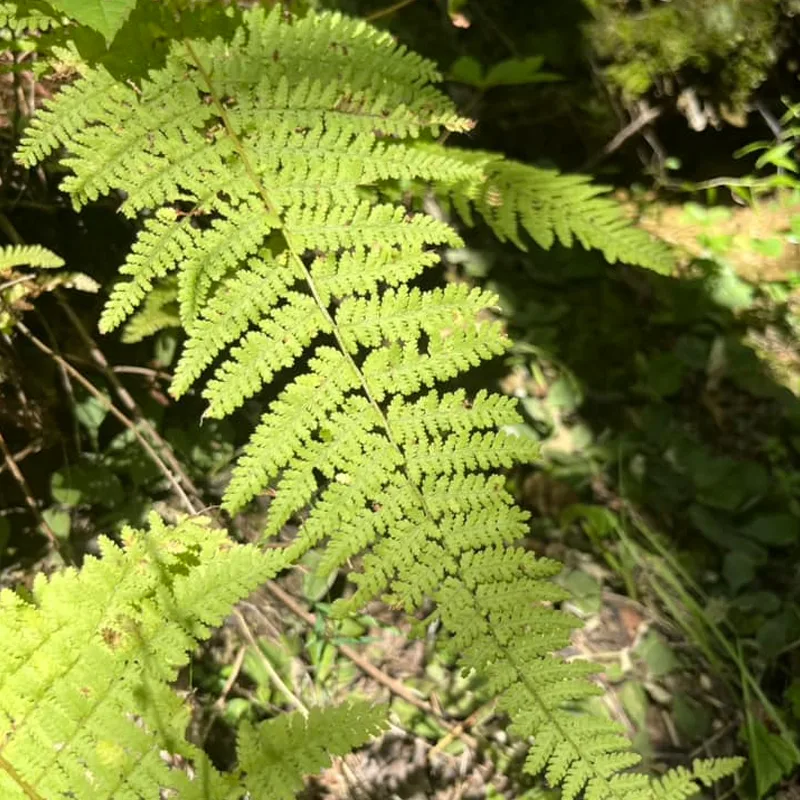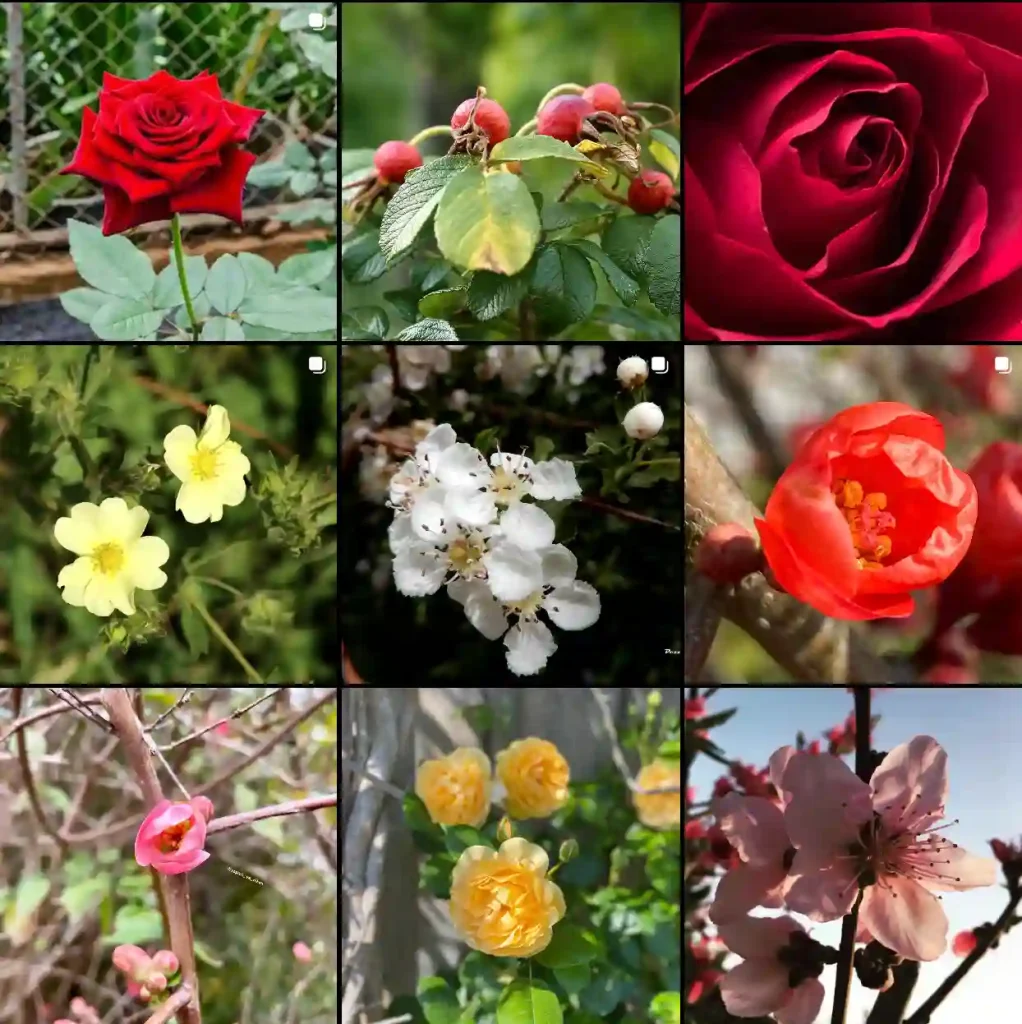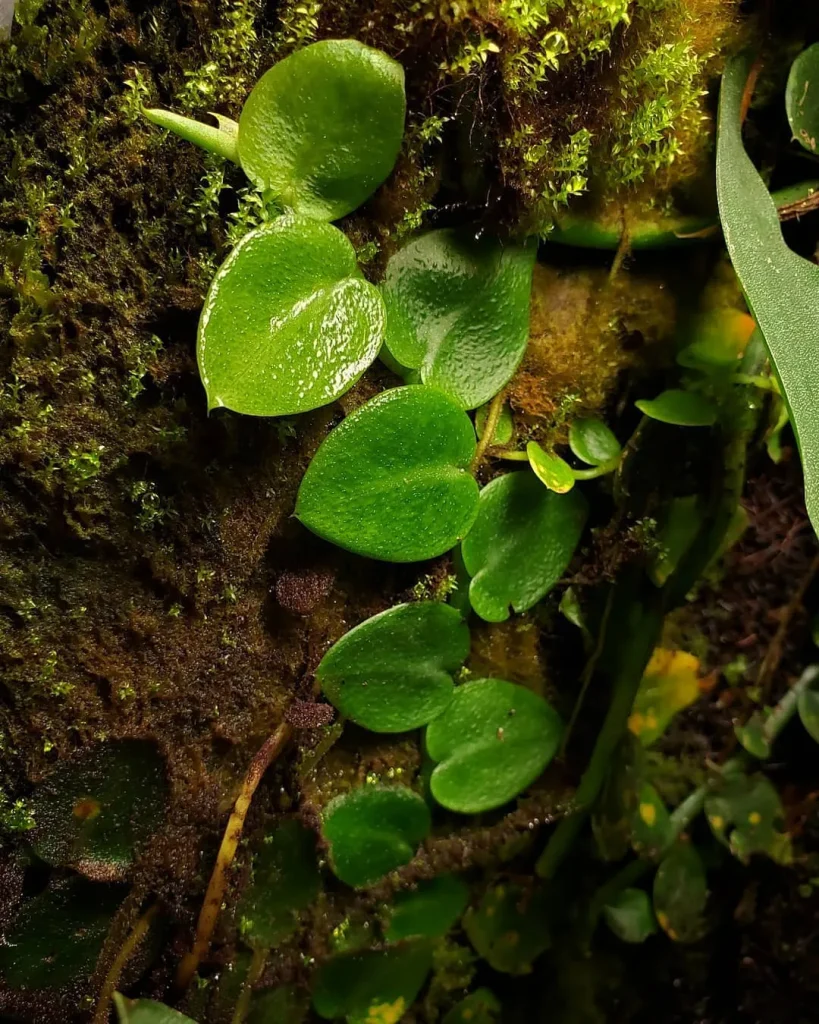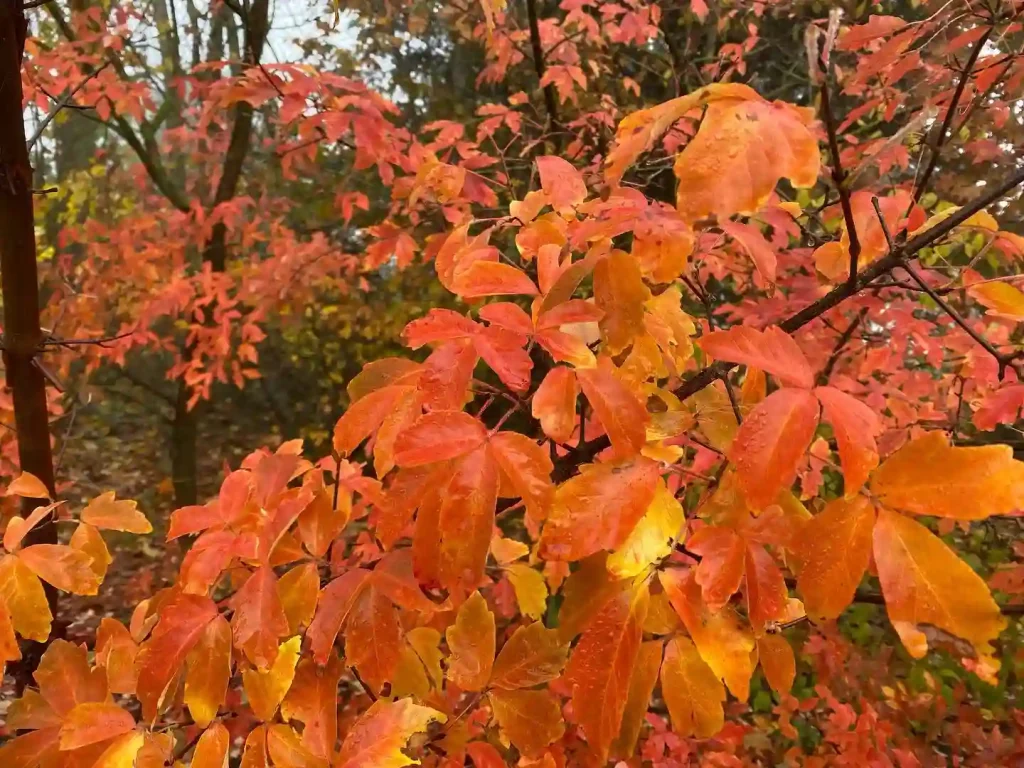In the vast and varied kingdom of flora, certain species capture the imagination with their unique beauty and intriguing origins. Among these captivating botanical wonders is Begonia phuthoensis, an exquisite rhizomatous begonia hailing from the verdant landscapes of Vietnam. Often admired for its distinctive foliage and delicate blooms, this species offers a delightful challenge and immense reward for dedicated plant enthusiasts. This comprehensive guide delves into every facet of Begonia phuthoensis, from its discovery and natural habitat to detailed cultivation practices, common challenges, and a personal, two-year time-lapse account of nurturing this emerald gem from a tiny cutting to a thriving specimen.
The Enigmatic Origins: Discovery and Botanical Classification
Begonia phuthoensis was formally described in 2004 by Hieu Quang Nguyen, a significant contribution to the extensive Begoniaceae family. This family, comprising over 1,800 species, is one of the largest angiosperm genera, renowned for its incredible diversity in leaf shape, color, and growth habit. Begonia phuthoensis belongs to the section Coelocentrum, a group known for its rhizomatous growth and often striking foliage.
Its name, phuthoensis, directly references its native home: Phú Thọ Province in Vietnam. This geographical specificity highlights its endemic nature, meaning it is found exclusively in this particular region. Understanding its origin is crucial, as it provides invaluable clues to its preferred growing conditions, allowing cultivators to mimic its natural environment for optimal health and vigor.
A Portrait of Beauty: Detailed Botanical Profile
Begonia phuthoensis is primarily celebrated for its aesthetic appeal, a combination of striking foliage and subtle, elegant flowers. As a rhizomatous begonia, it develops thickened, horizontal stems (rhizomes) that creep along or just beneath the soil surface, from which leaves and flower stalks emerge.
Foliage: The Crown Jewel
The leaves of Begonia phuthoensis are undoubtedly its most captivating feature. They typically display a vibrant lime-green coloration, often with a somewhat textured or patterned surface, making each leaf a miniature work of art. The shape is usually asymmetric (unequal-sided), a common characteristic among many Begonia species. The size of the leaves can vary, but mature plants often produce substantial foliage that contributes to a lush, full appearance. The intricate venation can sometimes present subtle darker markings, adding to its visual complexity.
Flowers: Delicate Accents
While the foliage takes center stage, the flowers of Begonia phuthoensis provide a charming contrast. These delicate blossoms typically appear in shades of white or very pale pink, emerging from slender stalks. Like most begonias, the plant is monoecious, meaning it bears both male and female flowers separately on the same plant. The male flowers usually contain numerous stamens, while the female flowers possess a prominent inferior ovary and two to four branched or twisted stigmas. Although smaller and less flamboyant than those of some other begonia types (like tuberous begonias), they add a touch of ephemeral grace to the overall display, especially when blooming in profusion.
Growth Habit: A Spreading Beauty
As a rhizomatous species, Begonia phuthoensis typically exhibits a spreading growth habit. The rhizomes can grow quite long, allowing the plant to gradually expand its footprint. This makes it an excellent choice for wider pots or as a groundcover in suitable tropical garden settings where it can truly stretch out and showcase its dense foliage. Its ultimate size can be quite substantial, developing into a large, impressive specimen under ideal conditions.
Thriving in the Tropics: Natural Habitat and Ecosystem
To successfully cultivate Begonia phuthoensis, one must appreciate its native environment. Originating from the wet tropical biome of Vietnam, this begonia thrives in conditions that mimic the understory of humid forests.
Key Environmental Factors:
- Shade to Partial Shade: In its natural habitat, Begonia phuthoensis grows beneath the canopy of taller trees, receiving filtered light rather than direct, intense sunlight. This is why bright, indirect light or partial shade is crucial for its cultivation.
- High Humidity: Tropical forests are characterized by consistently high humidity. This species relies on atmospheric moisture, making high humidity a non-negotiable aspect of its care.
- Moist, Well-Draining Soil: The forest floor provides a rich, organic substrate that retains moisture but never becomes waterlogged. This is often achieved through a mix of decaying leaves and other organic matter, allowing for good aeration while keeping roots hydrated.
- Warm, Stable Temperatures: As a tropical plant, Begonia phuthoensis is accustomed to warm temperatures without significant fluctuations or cold spells.
Understanding these elements of its native habitat is the cornerstone of providing optimal care for this magnificent plant in cultivation.
The Art of Cultivation: A Comprehensive Care Guide
Cultivating Begonia phuthoensis requires attention to detail, but the rewards are well worth the effort. By replicating its natural conditions as closely as possible, you can ensure a healthy and vibrant plant.
1. Light Requirements: The Right Balance
Begonia phuthoensis thrives in bright, indirect light. Think of the dappled sunlight filtering through a tree canopy.
- Indoors: Place it near an east or north-facing window where it receives gentle morning sun or consistent ambient light. A south or west-facing window would require sheer curtains or significant distance to diffuse the intense afternoon rays.
- Outdoors (in suitable climates): Plant in a location that receives partial to full shade. Morning sun is generally acceptable, but protection from harsh midday and afternoon sun is critical to prevent leaf scorch.
- Signs of improper light:
- Too much light: Leaves may appear bleached, yellow, or develop brown, crispy spots (sunburn).
- Too little light: Growth may become leggy, and leaf coloration might be duller; flowering may be sparse or absent.
2. Watering Techniques: Consistent Moisture, Not Soggy
Watering is perhaps the most critical aspect of Begonia phuthoensis care. It prefers consistently moist soil but is highly susceptible to root rot if overwatered or left in soggy conditions.
- Frequency: Allow the top 1-2 inches (2.5-5 cm) of the soil to dry out before watering again. You can test this by inserting your finger into the soil.
- Method: Water thoroughly until water drains from the bottom of the pot. This ensures the entire root ball is moistened. Discard any excess water from the saucer to prevent the plant from sitting in standing water.
- Avoid Wetting Foliage: Whenever possible, water at the base of the plant. While some occasional misting might be beneficial for humidity, consistently wet foliage can lead to fungal diseases like powdery mildew, especially in environments with poor air circulation.
- Winter vs. Growing Season: Reduce watering frequency slightly during the cooler, darker months (winter) when the plant’s growth slows down.
3. Humidity Requirements: A Tropical Necessity
High humidity is paramount for Begonia phuthoensis. Its tropical origins mean it craves moisture in the air. Aim for humidity levels of 60% or higher.
- Humidifier: The most effective way to provide consistent humidity is to use a room humidifier, especially in dry indoor environments.
- Pebble Tray: Place the pot on a tray filled with pebbles and water. Ensure the bottom of the pot does not sit directly in the water, as this can lead to root rot. The evaporation from the water will increase localized humidity.
- Grouping Plants: Grouping your begonia with other plants can create a microclimate with higher humidity through collective transpiration.
- Terrariums/Cloches: For very dry environments or to provide an exceptionally humid microclimate, growing Begonia phuthoensis in a terrarium or under a cloche can be highly beneficial.
4. Soil Mix: Well-Draining and Aerated
A well-draining, airy, and slightly acidic potting mix is essential to prevent waterlogging and promote healthy root development.
- Ideal Mix: A good recipe often includes:
- 2 parts Peat moss or Coco coir: For moisture retention and a slightly acidic pH.
- 1 part Perlite or Pumice: For excellent drainage and aeration.
- 1 part Orchid bark or Horticultural charcoal: To provide larger air pockets and prevent compaction.
- Pre-made Options: A high-quality African Violet mix or a general-purpose potting mix amended with extra perlite/orchid bark can also work.
5. Fertilization: Fueling Growth
Begonia phuthoensis benefits from regular feeding during its active growing season (spring and summer).
- Type: Use a balanced, water-soluble fertilizer formulated for houseplants or flowering plants. A 10-10-10 or 20-20-20 NPK ratio diluted to half or quarter strength is often recommended. If you prioritize foliage, a slightly higher nitrogen formula could be used, but generally a balanced one is sufficient.
- Frequency: Fertilize every 2-4 weeks during spring and summer.
- Winter: Reduce or cease fertilization during the fall and winter months when the plant’s growth naturally slows. Over-fertilizing can lead to nutrient burn.
6. Temperature & Climate: Warm and Consistent
As a tropical species, Begonia phuthoensis prefers warm, stable temperatures.
- Ideal Range: Maintain temperatures between 65∘F to 75∘F (18∘C to 24∘C).
- Avoid Extremes: Protect it from temperatures below 50∘F (10∘C), as cold drafts or sudden drops can stress or damage the plant. Keep it away from heating/cooling vents.
- Frost Tender: It is extremely frost-tender and will not survive freezing temperatures outdoors.
7. Potting & Repotting: Room to Grow
Begonia phuthoensis has rhizomes that spread horizontally, so choosing the right pot is important.
- Pot Material: Terracotta pots can help prevent overwatering by wicking away excess moisture, but they may also dry out too quickly, especially in dry climates. Plastic or glazed ceramic pots retain moisture longer. Ensure any pot has drainage holes.
- Pot Size: When repotting, choose a pot that is only slightly larger (1-2 inches/2.5-5 cm wider) than the current one. Begonias generally prefer to be a little root-bound. Too large a pot can lead to excess soil moisture and root rot.
- Repotting Frequency: Repot every 1-2 years, or when the plant has significantly outgrown its pot, or when the soil appears compacted and no longer drains well. The best time to repot is in spring, at the beginning of the growing season.
8. Pruning: Shaping and Health
Regular pruning helps maintain the plant’s shape, encourages bushier growth, and removes any unhealthy parts.
- Deadheading: Remove spent flowers by cutting the stalk back to the nearest leaf node or the base of the plant. This redirects the plant’s energy from seed production to foliage growth and further blooming.
- Leaf Removal: Trim off any dead, yellowing, or damaged leaves at their base.
- Shaping & Bushiness: Pinch back the tips of stems to encourage branching and a denser, more compact form. For rhizomatous begonias, you can also trim back overgrown rhizomes to keep the plant contained. Use clean, sharp scissors or pruning shears to prevent disease transmission.
9. Pest Control: Vigilance is Key
Begonias, including Begonia phuthoensis, can be susceptible to common houseplant pests.
- Common Pests: Aphids, mealybugs, spider mites, thrips, and whiteflies are the most frequent culprits.
- Inspection: Regularly inspect your plant, especially the undersides of leaves and along stems, for any signs of pests.
- Treatment:
- Mild infestations: Wipe pests away with a cotton swab dipped in rubbing alcohol, or rinse the plant thoroughly with water (ensure good air circulation afterward to prevent fungal issues).
- Severe infestations: Use insecticidal soap or neem oil, following product instructions carefully. Ensure good air circulation to prevent powdery mildew.
10. Troubleshooting Common Issues:
- Yellowing Leaves: Can indicate overwatering (most common), nutrient deficiency, or too much direct light. Check soil moisture first.
- Brown, Crispy Leaf Edges: Often a sign of low humidity or underwatering. Increase humidity and ensure consistent watering.
- Drooping Leaves: Can signal either underwatering (soil too dry) or overwatering (root rot). Check soil moisture and the state of the roots.
- Powdery Mildew: White, powdery spots on leaves, often due to high humidity combined with poor air circulation. Improve air circulation, reduce misting, and treat with a fungicide if necessary.
Propagation: Multiplying Your Emerald Gems
One of the most rewarding aspects of growing Begonia phuthoensis is its relatively easy propagation, especially for a rhizomatous begonia. This allows you to create more plants for your collection or to share with fellow enthusiasts.
1. Rhizome Cuttings: The Most Common Method
Since Begonia phuthoensis is a rhizomatous species, propagating via rhizome cuttings is highly effective.
- Selection: Choose a healthy, mature rhizome segment that is at least 2-4 inches (5-10 cm) long and has at least one node (where a leaf or stem has emerged or could emerge).
- Cutting: Use a clean, sharp knife or sterile pruning shears to make a clean cut.
- Preparation: Allow the cut end to callous over for a few hours to a day to reduce the risk of rot.
- Planting: Lay the rhizome segment horizontally on a moist, well-draining rooting medium (e.g., a mix of peat moss and perlite) and lightly cover it. Some recommend burying it partially, while others suggest just laying it on top.
- Environment: Place the pot in a warm, humid environment with bright, indirect light. A humidity dome or clear plastic bag can help maintain high humidity.
- Rooting: Roots should form within a few weeks, followed by new shoots emerging from the nodes.
2. Leaf Cuttings: Another Viable Option
Leaf cuttings can also be used, though they might take longer to produce a full plant.
- Selection: Choose a healthy, mature leaf with its petiole (leaf stalk) attached.
- Cutting: Make a clean cut at the base of the petiole.
- Method 1 (Petiole in Medium): Insert the petiole into a moist, well-draining rooting medium, ensuring the leaf blade sits above the soil.
- Method 2 (Leaf Blade Division): For larger leaves, you can cut the leaf blade into several wedge-shaped pieces, ensuring each piece contains a portion of a major vein. Insert the cut end with the vein into the rooting medium.
- Environment: Provide a warm, humid environment with bright, indirect light, similar to rhizome cuttings.
- Rooting: Roots and new plantlets will eventually form from the cut edges or the base of the petiole. This process can take several weeks to a few months.
Begonia phuthoensis vs. Other Begonias: Understanding the Distinctions
The genus Begonia is incredibly diverse, with thousands of species and cultivars often grouped into categories based on their root systems and growth habits. Begonia phuthoensis falls into the rhizomatous begonia category. Understanding its distinctions from other types can help appreciate its unique characteristics and cultivation needs.
Rhizomatous Begonias (e.g., Begonia phuthoensis, Rex Begonias):
- Defining Feature: Grow from thick, fleshy rhizomes that creep along the soil surface or just beneath it.
- Foliage Focus: Primarily cultivated for their stunning and diverse foliage, which comes in an astonishing array of shapes, textures, and colors (e.g., Rex Begonias).
- Flowers: Typically produce clusters of small to medium-sized flowers, often white or pink, which appear mostly in winter or early spring (though this can vary).
- Care: Generally require high humidity, bright indirect light, and well-draining soil. Susceptible to rot if overwatered.
Vs. Cane-like Begonias (e.g., Angel Wing Begonias):
- Defining Feature: Characterized by upright, often segmented stems that resemble bamboo canes.
- Foliage & Flowers: Valued for both their attractive, often “angel wing”-shaped leaves (which can be spotted or patterned) and their cascading clusters of vibrant flowers (red, pink, orange).
- Growth: Can grow quite tall and bushy.
- Care: Generally more tolerant of lower humidity than rhizomatous types, preferring bright, indirect light and consistent moisture.
Vs. Fibrous-Rooted Begonias (e.g., Wax Begonias, Semperflorens):
- Defining Feature: Possess a dense, fibrous root system. They do not have rhizomes or tubers.
- Foliage & Flowers: Often grown as annuals for their continuous blooms and glossy, rounded leaves (green or bronze). Flowers are typically smaller but very numerous, in shades of red, pink, or white.
- Growth: Tend to be compact and bushy.
- Care: More tolerant of direct sun (especially bronze-leaved varieties) and a wider range of conditions, making them popular bedding plants.
Vs. Tuberous Begonias:
- Defining Feature: Grow from tubers (modified underground stems that store food and water). They are typically deciduous, dying back to the tuber in winter.
- Foliage & Flowers: Known for their large, showy, often camellia-like flowers in a wide spectrum of colors. Foliage is usually less emphasized.
- Growth: Can be upright or trailing.
- Care: Require a dormant period, prefer cooler temperatures during bloom, and precise watering to prevent tuber rot.
In summary, Begonia phuthoensis, as a rhizomatous type, stands out for its captivating foliage and its distinctive spreading habit, contrasting with the upright canes, continuous blooms of fibrous types, or the dramatic flowers and dormancy of tuberous varieties.
Conservation Status and Ethical Sourcing
As an endemic species from Vietnam, the conservation status of Begonia phuthoensis is an important consideration. While it may not be listed on major endangered species lists, habitat destruction and unregulated collection always pose a threat to wild populations of unique plants. When acquiring Begonia phuthoensis, always ensure it comes from reputable sources that practice ethical and sustainable cultivation, rather than wild collection. Supporting nurseries that propagate their plants vegetatively helps protect natural ecosystems.
My Begonia phuthoensis Journey: A 2-Year Time-Lapse Cultivation Log
Allow me to share my personal journey of cultivating Begonia phuthoensis, a process that has been both challenging and incredibly rewarding. It began with a single, unassuming leaf cutting, and over two years, I watched it transform into a magnificent specimen.
Month 1-3: The Humble Beginnings – A Leaf’s Promise
My journey with Begonia phuthoensis began in early spring, when I acquired a healthy leaf cutting with a short petiole. I prepared a small pot with a mix of peat moss, perlite, and a hint of fine orchid bark – a blend I hoped would mimic its native forest floor. The cutting was gently inserted into the moist medium, and the entire pot was placed inside a clear plastic storage box, acting as a makeshift humidity dome.
The first month was a test of patience. I kept the box in a spot receiving bright, indirect light, away from any drafts. I’d mist the inside of the box daily to keep the humidity high and check the soil moisture, ensuring it never dried out completely but also wasn’t waterlogged. By the end of the second month, a tiny, almost imperceptible bump appeared at the base of the petiole, a hopeful sign of root development. Then, in the third month, the true magic began: a minuscule, curled leaf, no larger than a pea, started to unfurl from the soil. It was a moment of pure joy, signaling the birth of a new plantlet.
Month 4-6: Early Growth – A Sprouting Confidence
With the first true leaf unfurling, the plantlet began to show more rapid growth. Over the next few weeks, two more tiny leaves emerged, each displaying the characteristic lime-green hue. I maintained the high humidity, but now I started opening the plastic box for a few minutes each day, gradually acclimatizing the young plant to slightly less extreme humidity. This period was crucial for developing a strong root system. I started to notice the formation of the rhizome just at the soil surface, a thick, reddish-brown stem beginning to creep outward. I resisted the urge to fertilize, allowing the nascent roots to establish themselves fully without the risk of burn. Watering was still precise: only when the top half-inch of soil felt dry.
Month 7-12: The Teenage Spurt – Flourishing Foliage
As summer approached, the Begonia phuthoensis truly hit its stride. The leaves grew larger, exhibiting the beautiful asymmetric shape and vibrant color. The rhizome extended steadily, prompting me to consider a slightly wider pot. Around the eighth month, I carefully repotted it into a 6-inch (15 cm) terracotta pot, using a similar well-draining mix. I also began a light fertilization regimen, using a diluted balanced liquid fertilizer every four weeks.
During these months, the plant transitioned from a delicate sprout to a robust young adult. Its foliage became dense, creating a lush mound of green. I ensured good air circulation around the plant, especially important as it grew larger, to prevent fungal issues. The temperatures in my home were consistently warm, and I relied on a small room humidifier to keep the humidity above 60%. This was a period of constant visual delight, watching new leaves emerge, uncurl, and expand.
Year 1.5: The First Blossoms – A Delicate Surprise
It was late winter, almost 18 months into its life, when I noticed something new emerging from the base of the leaves – slender, reddish stalks. My heart skipped a beat as I realized these were flower buds! Begonia phuthoensis is primarily grown for its foliage, so the flowers were an anticipated bonus. Over the next few weeks, delicate white blooms unfurled. They were small, unassuming, yet incredibly charming, held aloft on their thin stalks, providing a lovely contrast to the vibrant green leaves.
I continued my regular care routine, perhaps being even more diligent with humidity and watering during this blooming period. The plant seemed to thrive on the consistency. The flowering lasted for about a month, with new buds opening as older ones faded. After the blooms senesced, I carefully deadheaded them, cutting the stalks back to encourage the plant to put its energy back into foliage growth.
Year 2: Mature Majesty – A Thriving Specimen
Now, at the two-year mark, my Begonia phuthoensis is a truly magnificent specimen. Its rhizomes have spread to fill the 8-inch (20 cm) pot I moved it into last spring, and its foliage is remarkably full and vibrant. The lime-green leaves, some now quite large, overlap to create a dense, tropical canopy. I occasionally prune older, less attractive leaves or trim back a rhizome that tries to escape the pot, always ensuring clean cuts.
The plant has proven to be relatively low-maintenance once its specific needs for high humidity and consistent (but not soggy) moisture are met. It has continued to produce sporadic flowers, primarily in the cooler months, adding a delightful surprise. My Begonia phuthoensis stands as a testament to the beauty and resilience of this Vietnamese gem, and a constant reminder of the patience and joy that comes with nurturing a living thing.
The Enduring Allure of Begonia phuthoensis
Begonia phuthoensis is more than just a houseplant; it is a piece of living art, a testament to the rich biodiversity of Vietnam’s tropical forests. Its striking foliage, delicate flowers, and intriguing rhizomatous growth habit make it a coveted specimen for plant collectors and enthusiasts. While it demands specific environmental conditions – particularly high humidity and careful watering – the satisfaction of watching this emerald gem thrive and mature is an unparalleled reward. By understanding its origins and providing attentive care, any gardener can embark on their own successful time-lapse journey with Begonia phuthoensis, transforming a humble cutting into a breathtaking botanical masterpiece.
If i die, water my plants!



